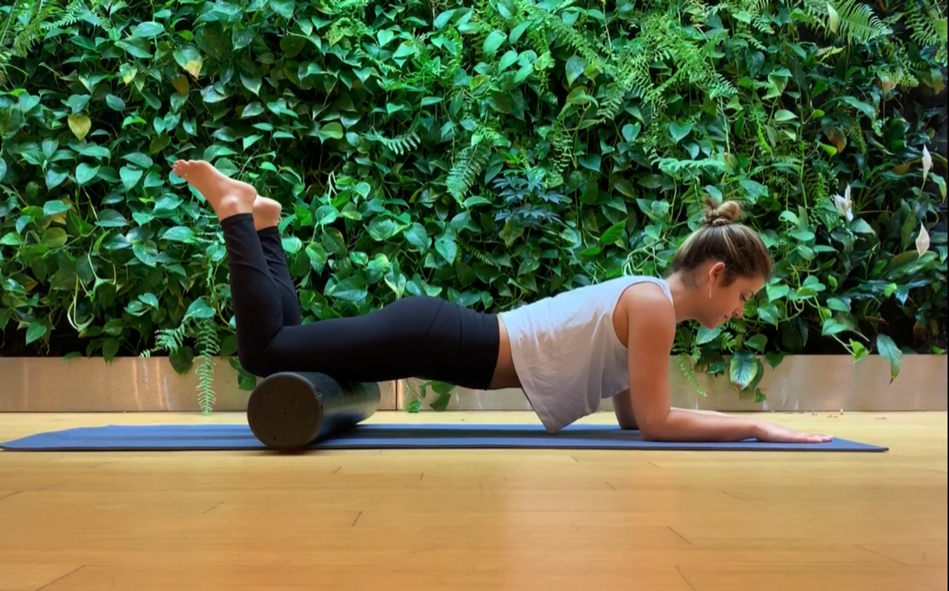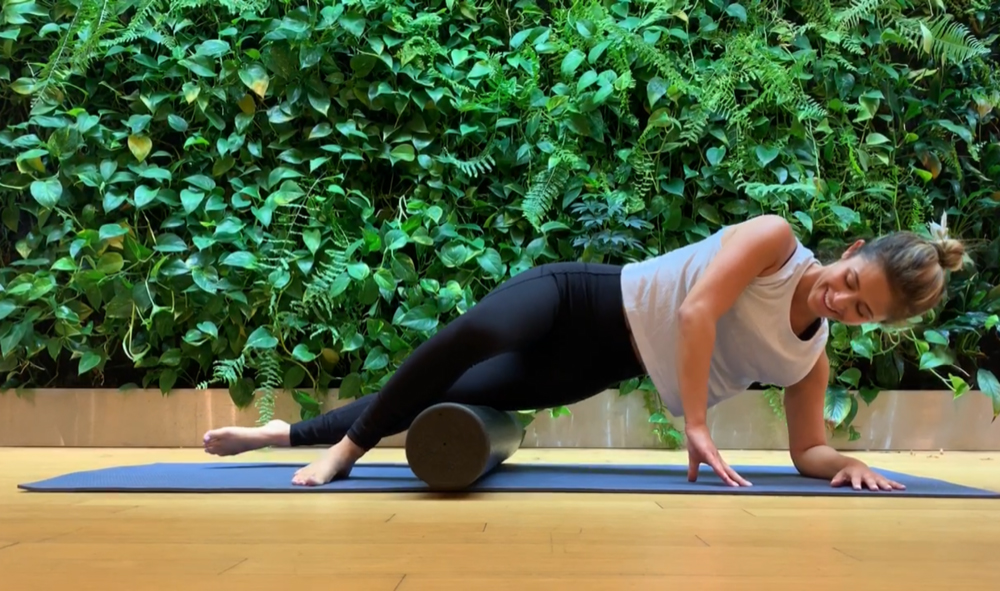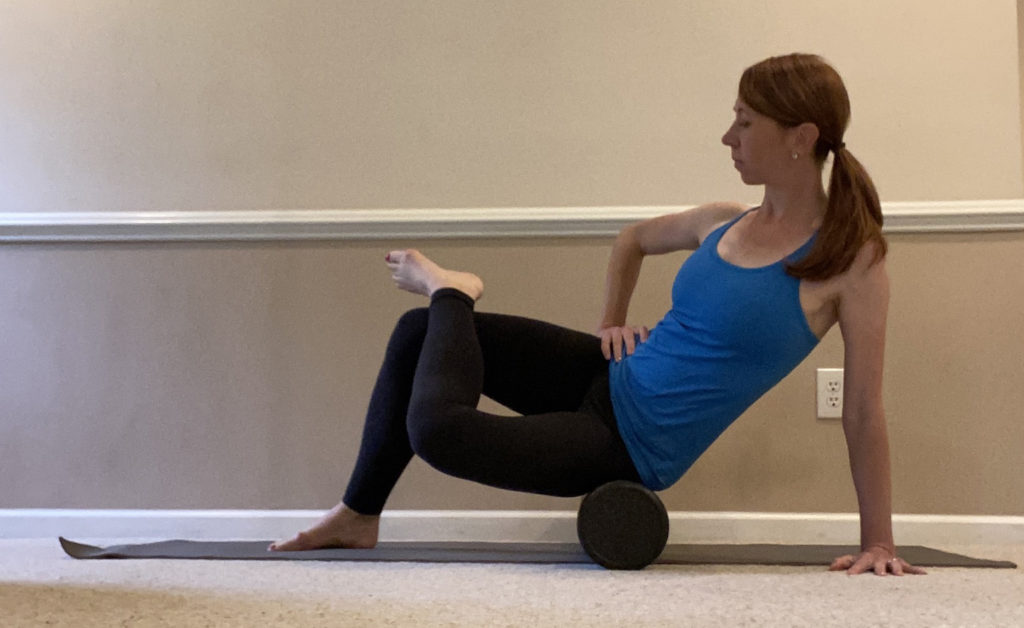
Foam rollers, balls and all kinds of other self-massage tools have become must-have accessories for many dancers. However, as with any part of a training and recovery regimen, it’s vital for dancers to roll correctly to ensure they reap the maximum benefits. We asked experts how dance teachers can help their students build a safe and effective foam rolling routine.
What are the benefits of foam rolling?
One of the chief benefits of foam rolling, or self-myofascial release, is increased blood flow to the tissues being rolled. This is especially helpful as part of a warm-up. “Increased blood flow to an area before performance has been shown to decrease risk of injury,” says Dr. Brittney Mims, PT, DPT, who has worked with dancers at Miami City Ballet, on tour with Madonna, and on Broadway.
Self-myofascial release can also decrease perception of muscle soreness, making it equally useful in recovery, says Alison Deleget, MS, ATC, program manager at NYU Langone’s Harkness Center for Dance Injuries. And in addition to pain reduction, there is value in the general feel-good effect of foam rolling, says Kerry Shea, certified advanced Pilates teacher and ballet teacher. “The release of tension can play a part in general ease of movement and mood enhancement. Often, dancers will say they feel lighter after doing release work,” she says.

Foam rolling may also help dancers improve their flexibility. “There’s good consensus in the literature that when you combine foam rolling with either static or dynamic stretching, you get an increase in flexibility,” says Deleget.
When, why and how to roll
“Ideally, students should be taking a weekly dance conditioning class from a specialist. This is where they will best learn foam-rolling and other self-massage techniques,” says Shea. As an alternative, she says, teachers can establish a weekly foam-rolling routine for their classes, and have dancers do it on their own once they are proficient.
With beginners, Shea suggests sticking to the bigger muscles, like calves, quads and glutes. Teachers should instruct students to roll gently, breathe deeply and back off if they feel more than a 4 out of 10 pain level. “Look out for signs students are rolling too hard, like grimacing faces and sounds of discomfort,” she says. Mims recommends spending about one minute per body part.
Teachers should distinguish between foam-rolling approaches that are appropriate before and after dancing, says Deleget. “Before class, we want to focus on continuous rolling. You want to roll along the length of the muscle with the purpose of increasing blood flow and getting the muscle warm and ready to work. After activity is when you can focus more on what I call the ‘search-and-destroy’ technique, where if you find a trigger point, or a spot where there’s more tension, you pause on that area for a period of time with the intent of getting that tension to release,” she says. Just as static stretches should be saved for after dancing, so should this more targeted approach to foam rolling.

While foam rolling isn’t detrimental for very young dancers, Deleget and Mims agree that it isn’t particularly useful until students are old enough to be training at an intense level and can understand how to safely use the roller. “I typically suggest foam rolling, mobility work and strengthening starting around 9 or 10 years old, although that isn’t a hard and fast rule,” says Mims, adding that foam rolling can be beneficial to address feelings of tightness during growth spurts.
If space and time are an issue in class, or if there aren’t enough rollers to go around, Shea says foam rolling can be incorporated as part of a circuit where students rotate through different stations. “At the beginning of class, as a dynamic warm-up, one station could be rolling, one station could be dynamic stretching, and one core exercises,” she says. “At the end of class, during reverence or cooldown combinations, have one group do the reverence and one group roll out, then switch.”
Dos and don’ts
Pass these foam-rolling best practices on to your students:
- Do choose the right tool. “I typically suggest using a ball for more specific restrictions and a foam roller for more general work,” says Mims.
- Don’t push too hard. “I always suggest that my patients start out on a softer foam roller or ball to make rolling more tolerable. If a patient only has a medium or high-density foam roller, I teach them to cover their foam roller with a towel to make it a bit softer. Relax into the foam roller or ball and move slowly when using it,” says Mims.
- Don’t roll on bone or across a joint, says Deleget. For example, if you’re rolling your quad, make sure to stay on the bulk of the muscle rather than rolling down onto your knee joint.
- Don’t linger too long on a spot that isn’t ready to let go. “If you’re not feeling the tissue release and the pain subside underneath the foam roller after about 15 or 20 seconds, roll away from that spot. Maybe work some of the tissue around it, which might then allow that spot to soften up. If you’re sitting on a spot for 45 seconds to a minute, you’re just going to end up with tight, bruised, irritated tissue,” says Deleget.
- Do drink water after rolling to keep your tissues hydrated, says Shea.

Hit the right spots
Shea shares her favorite areas to target:
- “The gluteus maximus is a good area to roll out with a racquetball or roller. If this area gets tight, it can inhibit a dancer’s full turnout potential.”
- “The hip flexors and quads tend to be a tight area on dancers. Releasing these areas helps achieve a higher passé, extensions and arabesque.”
- “Another dancer favorite is using a racquetball for rolling out the feet. This soothes sore feet, increases height of relevé, aids in a deeper plié, and gives a better point and flexed foot.”



